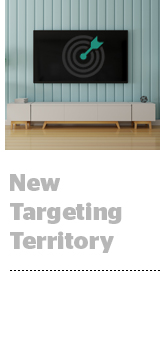
Targeting on TV with the same precision as digital is becoming a reality.
Hulu, Roku and other over-the-top (OTT) providers offer advanced audience and behavioral targeting capabilities like CRM onboarding, while companies such as Xandr and NCC Media are applying unique data sets to make the linear TV landscape more addressable.
But just because marketers can target granularly on TV doesn’t mean they should.
TV is a fundamentally different medium than digital and works well for broad reach advertising and building brand awareness. Digital is better suited for hypertargeting and retargeting tactics for customers already in a purchase funnel, said Nicolle Pangis, CEO of NCC Media.
And while digital allows marketers to target individuals, TV reaches viewers at the household level. Identifying individual viewers in front of a TV is still a ways off.
As digital marketers enter the TV buying world with sophisticated targeting capabilities, identifying the right balance for personalization in the living room is crucial.
“The industry is keenly aware of the power of TV,” Pangis said. “Everybody understands the importance of making sure that we get this right.”
Targeting taboos
While programmatic buyers are eager to apply complex targeting strategies to TV, it’s important that they don’t repeat the same mistakes they made in digital. For example, no one wants to see the same TV ads for three weeks for a pair of shoes they’ve already purchased.
“There’s a natural push and pull happening in TV preventing it from going too far, too fast,” said Rob Aksman, CEO of TV ad tech company BrightLine.
Where programmatic buyers became obsessed with slicing and dicing the most relevant target audiences on digital, they should recognize the power of targeting to a household on TV. TV can maintain its role as a broad reach vehicle, while targeting can offer opportunities for more personalized sequential messaging to smaller audiences, Pangis said.
“Targeting doesn’t negate the importance of broad reach, but it does allow TV to play in a different playground,” she said. “Marketers over time will determine what balance allows for the best results based on what they’re looking to do.”
Marketers should also be wary of retargeting on TV, a digital advertising tactic that’s long irritated consumers. Not only could retargeting feel intrusive on a TV, it could also create some awkward scenarios. Imagine a father being hit by a retargeted ad from Viagra while watching TV with his young daughters, or a couple seeing an ad for an engagement ring, threatening to blow the surprise.
So while retargeting on connected TV is technically possible today, premium sellers like Roku and Hulu prevent it within their platforms to protect the viewer experience.
“They don’t want to make the same mistakes that were made in web and mobile,” Aksman said. “Even in the longer tail, the devices are taking steps protect the consumer.”
But marketers, especially on the digital side, are eager to retarget consumers on TV. When it does become possible, the buy side can avoid poor experiences by building a new rule set for retargeting technology.
“Where we went wrong in digital is not necessarily that we retargeted a consumer with something that was of interest to them,” Pangis said. “It’s that we didn’t stop retargeting them.
That is a person-led decision that does not need to be replicated in TV.”
Don’t forget frequency capping
As marketers begin to target on TV, buyers will need to think carefully about how to manage frequency. Since most advanced TV viewing happens through walled gardens, monitoring reach and frequency across devices and networks is less seamless than in programmatic.
Where the programmatic ecosystem scaled on a common infrastructure, the technological walls are becoming higher in TV as “factions and kingdoms” emerge that are “not easy to connect,” said John Taylor, SVP of Global Data Strategy at Essence.
“It seems like quite a rat’s nest of technologies,” he said. “It’s very hard to bring them together in a way that you’re not boxed into to a certain set of inventory.”
That fragmented landscape means agency buyers must use more sophisticated frequency capping controls across devices to ensure viewers aren’t being bombarded with the same ads.
“If you frequency cap three times per day on four different platforms, you have to be aware that a consumer could potentially see that ad 12 times,” Pangis said.
Slow and steady
While the industry is excited about TV targeting, it will still be a while before it is used on a large scale.
“The footprint of genuinely addressable household TV is relatively small,” Taylor said. “It still seems to me like an experimentation sound box.”
Marketers should monitor privacy regulation in digital before jumping too far into TV targeting and take a transparent data collection approach for consumers. That restraint may be difficult for programmatic buyers, who have “become addicted to a diet of more,” Taylor said.
“It’s forcing digital marketers to think more upstream in terms of why we’re planning communications in the way that we are and what the human factor is,” he said. “We can’t subsist on this diet of increasingly granular data.”
But the fact that the industry is discussing how to more thoughtfully approach targeting on TV suggests that it’s already far ahead of where digital was in its early days.
“This is chapter two of the same book,” Pangis said, “but a lot of us that have seen chapter one know there’s a different balance we should’ve struck in digital that we have the opportunity to strike in TV.”
This post was syndicated from Ad Exchanger.


More Stories
Kiwi filmmaker spotlights media struggles at top global awards
T-Mobile Has Appointed Kristin Harrer As Senior Vice President and Chief Brand Officer
Taste paradise with Whittaker’s new Mango & Coconut block